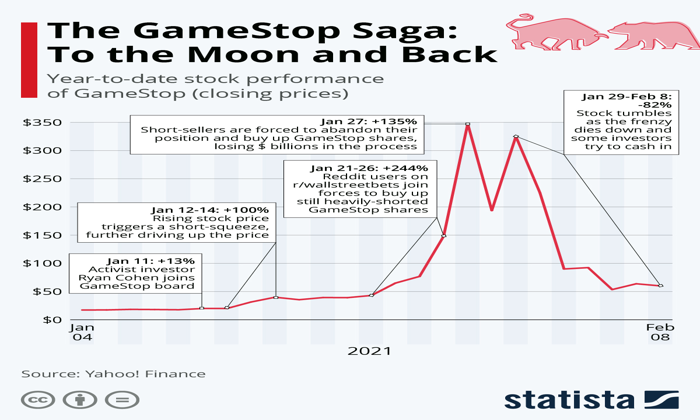CoreWeave revenue has seen an unprecedented surge, with the company announcing a staggering $981 million for Q1, marking a fivefold increase from last year. This impressive growth reflects the soaring AI demand that is driving investments in technology and infrastructure. However, as CoreWeave’s financial performance unfolds, the company faces significant challenges, including deepening losses of $314 million amid soaring capital expenditures projected to reach $23 billion in 2025. This ambitious spending is essential to meet the escalating needs of the AI sector, pushing investors to weigh the balance between growth and profitability. With its tech IPO on the horizon, CoreWeave is at a critical juncture, striving to capitalize on a booming market while managing its rapid expansion effectively.
CoreWeave is experiencing remarkable growth in its revenue, reflecting the increasing appetite for artificial intelligence technologies. The company’s latest earnings report reveals a significant jump in income, propelled by the rising demand for advanced computing capabilities in various industries. Yet, despite this surge, the firm has encountered broader financial hurdles, with substantial losses linked to its ongoing investments in infrastructure and operational scaling. As CoreWeave prepares for a major public offering, investors are closely monitoring its journey to profitability amidst the backdrop of heavy capital investments and ambitious growth strategies. The situation highlights the dynamic interplay between aggressive market demand and the financial realities faced by leading tech players in the AI space.
CoreWeave Revenue Growth Amidst Rising AI Demand
CoreWeave has recently reported a staggering revenue increase, with first-quarter earnings soaring to $981.6 million—an impressive fivefold spike compared to the same period last year. This dramatic growth can be largely attributed to the rising demand for AI computing power as more businesses leverage artificial intelligence across various sectors. As companies increasingly invest in AI capabilities, CoreWeave is positioned at the forefront of this revolution, effectively transforming the landscape of technology infrastructure.
With the surge in revenue, CEO Mike Intrator openly acknowledged that the company is working tirelessly to scale operations to meet the unprecedented needs prompted by the expanding AI market. Such positive financial results encapsulate CoreWeave’s potential in a sector that is thriving, yet it also brings about immediate questions regarding the sustainability of this growth as competition intensifies in AI technology and infrastructure.
CoreWeave’s Heavy Spending and Its Effect on Profitability
Despite CoreWeave’s remarkable sales growth, the company is grappling with substantial financial losses, reporting a net loss of $314 million in Q1. This trend of increasing expenditures raises valid concerns about profitability in the near-term future. With capital expenditures projected to hit an astonishing $23 billion in 2025, clearly outpacing previous analyst predictions, investors may begin to reassess the company’s immediate financial health and viability.
Such expenses, while vital for expanding infrastructure to cater to AI demand, are seen as a double-edged sword. According to industry analysts, while extensive investment in capital can ensure CoreWeave’s growth now, it also creates potential long-term financial strain if future profits do not keep pace. The challenge remains for CoreWeave to balance aggressive spending with a strategic focus on building a sustainable revenue base that supports profitability.
Investment in AI: A Double-Edged Sword for CoreWeave
The investment landscape for AI technologies is shifting rapidly, drawing considerable funding towards companies like CoreWeave that cater to needs in the AI infrastructure space. As enterprises ramp up their AI capabilities, CoreWeave stands to benefit significantly from these trends, leveraging the opportunity to solidify its market position. With increasing confidence in AI, venture capital and public investors alike are keen to align their investments with companies facilitating such transformations.
However, this influx of investment also places pressure on CoreWeave to deliver results that outweigh its current financial shortfalls. As highlighted by industry analysts, the true measure of success will depend not just on initial revenue figures but on the company’s ability to convert this momentum into sustainable profits. As competition heats up and new players enter the market, maintaining attractiveness to investors and ensuring healthy returns will require strategic foresight and fiscal discipline.
CoreWeave’s IPO and Its Implications for Future Growth
In March 2025, CoreWeave made headlines as it went public, setting the stage for what could be one of the biggest technology IPOs of the year. With significant backing from financial powerhouses such as Morgan Stanley, Goldman Sachs, and JPMorgan, the IPO has sparked interest and excitement within the tech community. However, with this public status comes the heightened scrutiny of CoreWeave’s financial performance and strategic direction.
While the buzz around the IPO amplifies CoreWeave’s visibility and credibility, it also introduces obligations towards shareholders. The company’s journey from crypto mining to AI infrastructure has been notable, but the question now is whether it can maintain the momentum generated by its IPO while focusing on profitable growth. Analysts suggest that CoreWeave’s future trajectory will hinge on its ability to translate significant investment into tangible performance.
Capital Expenditures: The Backbone of CoreWeave’s Strategy
Capital expenditures are often seen as the lifeblood of technology companies, and for CoreWeave, projected spending of $23 billion in 2025 represents a strategic investment necessary for fostering growth in the AI sector. These capital investments are pivotal as they facilitate the enhancement of CoreWeave’s infrastructure, enabling it to scale up and better meet the growing demand for high-performance computing.
However, the aggressive spending strategy prompts critical considerations about its direct impacts on long-term profitability. As CoreWeave navigates this landscape, investors and stakeholders will need assurances that these expenditures will yield substantial returns and not merely inflate short-term revenue figures. Balancing immediate growth with prudent financial management is crucial as the firm charts its course into the highly competitive and rapidly evolving AI market.
The Role of Market Demand in CoreWeave’s Success
CoreWeave’s impressive growth can largely be attributed to the surging market demand for AI solutions. As various industries look to integrate AI into their operations, the need for robust computing infrastructures capable of handling complex tasks has never been higher. This shifting dynamic positions CoreWeave advantageously, tapping into a market that not only promises growth but also requires persistent innovation to stay relevant.
Nevertheless, as demand ramps up, so does competition within the AI infrastructure sector. For CoreWeave to sustain its position as a leader, it must continually innovate and adapt its offerings to cater to the evolving technological landscape. Only by aligning its service capabilities with market trends can the company enhance its attractiveness to clients and investors, ensuring continual demand for its services.
Technological Innovations Driving CoreWeave’s Market Position
CoreWeave is at the forefront of technological innovations in the AI infrastructure space, seeking to advance its capabilities to support a growing client base. As the AI market evolves, CoreWeave emphasizes the importance of staying ahead with state-of-the-art technologies that facilitate faster and more efficient computing solutions. This ongoing innovation is essential not only for meeting existing demand but also for capturing emerging opportunities in the tech landscape.
The company’s ability to innovate and implement advanced solutions will be paramount in maintaining its competitive edge. With a strong focus on research and development, CoreWeave aims to position itself as a leader in providing efficient and scalable services. Such a focus will not only galvanize its market position but also assure investors of its commitment to sustainable growth amid fluctuating demands.
Navigating Financial Challenges at CoreWeave
While CoreWeave is enjoying robust revenue growth, the larger net loss it has reported serves as a reminder of the financial challenges that come with rapid expansion. As the company scales to meet growing AI demand, the financial implications of increased spending necessitate a careful balancing act. Investors will be watching closely how CoreWeave navigates these challenges while striving for profitability in an increasingly competitive market.
Understanding the intricacies of managing expenditures while capturing market share is crucial for CoreWeave in addressing potential risks. The company must prioritize strategic financial planning to mitigate these challenges, ensuring that investments lead to substantial returns. Through solid fiscal management, CoreWeave can bolster investor trust and pave the way for sustainable growth.
The Future of CoreWeave in the Expanding AI Ecosystem
As the AI ecosystem continues to expand, CoreWeave finds itself in a pivotal position to capitalize on opportunities that arise from this growth. With an impressive first-quarter revenue and ongoing developments in infrastructure, the future looks promising for the company. Nevertheless, it remains essential for CoreWeave to remain adaptable to market shifts and continuously innovate to maintain its leadership status.
Moreover, as the competition intensifies, CoreWeave must focus on establishing long-term relationships with clients while delivering cutting-edge solutions that meet their evolving needs. The dual focus on innovation and market adaptability will be critical in navigating the complexities of growth and ensuring a significant role in the future of AI-driven technologies.
Frequently Asked Questions
What factors contributed to CoreWeave’s revenue growth in Q1 2025?
CoreWeave’s revenue growth in Q1 2025 can be attributed to a fivefold increase, reaching $981.6 million. This surge is primarily driven by soaring AI demand, as the company continues to expand its computing power to support this growing market.
How has CoreWeave’s financial performance impacted its stock price following its earnings report?
Following CoreWeave’s earnings report, its stock price showed volatility. Shares rose by 6.6% to $67.46 upon the announcement of a strong revenue increase, but later dropped by 7.8% in after-hours trading, reflecting investor concerns about its widening losses amid significant capital expenditures.
What are CoreWeave’s projected capital expenditures for 2025 and their implications?
CoreWeave projects capital expenditures of up to $23 billion for 2025, which significantly exceeds analyst expectations. This heavy spending is aimed at scaling operations to meet increasing AI demand, but raises concerns about long-term profitability and financial sustainability.
How does CoreWeave’s transition to AI infrastructure impact its revenue generation?
CoreWeave’s transition from crypto mining to AI infrastructure has positively impacted its revenue generation, as evidenced by a substantial first quarter revenue increase in 2025. However, analysts emphasize the need for a robust, recurring revenue model to ensure sustainable long-term growth in the competitive AI market.
What challenges does CoreWeave face despite its significant revenue increase?
Despite a significant revenue increase, CoreWeave faces challenges such as widening losses of $314 million in Q1 2025 and ongoing concerns about profitability amid high capital expenditures. The company’s ability to turn AI demand into lasting profits remains critical for its future.
What role does investment in AI play in CoreWeave’s financial strategy?
Investment in AI plays a crucial role in CoreWeave’s financial strategy, as the company directs substantial capital toward infrastructure to meet skyrocketing demand. This strategy is vital for maintaining competitive advantage, though it also raises questions about the sustainability of its financial performance.
When did CoreWeave go public, and how has that affected its financial reports?
CoreWeave went public in March 2025, marking its first earnings report at this stage. The transition to a publicly traded company has highlighted both its rapid revenue growth and ongoing financial challenges, including increased expenditures and net losses.
How does CoreWeave’s financial performance compare with industry expectations?
CoreWeave’s Q1 financial performance, with a revenue of $981.6 million, far exceeds last year’s results; however, the company’s widening losses and substantial projected capital expenditures raise concerns among analysts who expect sustainable profitability to accompany such growth.
| Metric | Q1 2025 | Q1 2024 |
|---|---|---|
| Revenue | $981.6 million | $188 million |
| Net Loss | $314 million | $129.2 million |
| Projected Spending for 2025 | $23 billion | N/A |
| Stock Price Gain (Post-report) | 6.6% | N/A |
| Stock Price Loss (After-hours) | 7.8% | N/A |
Summary
CoreWeave revenue surged dramatically in Q1 2025, reaching $981.6 million due to unprecedented demand in the AI sector. However, the significant financial losses of $314 million and high projected expenditures of $23 billion raise serious questions about future profitability. While the stock briefly rose following the earnings report, it later declined in after-hours trading, highlighting investor concerns. As analysts urge a focus on sustainable revenue rather than just growth, CoreWeave’s path ahead will need to balance its ambitious expansion with the reality of generating profit in a highly competitive market.
CoreWeave revenue has skyrocketed, reflecting the immense surge in AI demand that has defined the current technology landscape. Reporting an astonishing $981.6 million for Q1, the company saw its revenue increase fivefold compared to the previous year. However, despite this impressive growth, concerns linger as CoreWeave faces a hefty projected spending of $23 billion in capital expenditures for 2025, raising questions about its overall financial performance. Investors reacted positively to the revenue boost, yet anxieties about profitability were evident when shares fluctuated significantly in after-hours trading. As the company continues its aggressive expansion, the balance between skyrocketing revenues and growing losses will be pivotal in determining its future within the competitive technology IPO space.
The financial landscape for CoreWeave, a frontrunner in the AI infrastructure sector, showcases a remarkable financial trajectory influenced heavily by increasing investment in AI technology. A pivotal earnings report highlighted a dramatic fivefold rise in revenue, placing the company at the forefront of a booming demand for advanced computing capabilities. Yet, the substantial capital expenditures anticipated for the year evoke a critical examination of sustainable growth amid potential profitability challenges. As the tech industry evolves, CoreWeave’s journey reflects broader trends in capital allocation and economic health within the AI market. The implications of such financial performance resonate for investors and analysts alike, underlining the need for strategic planning in an ever-changing tech environment.














